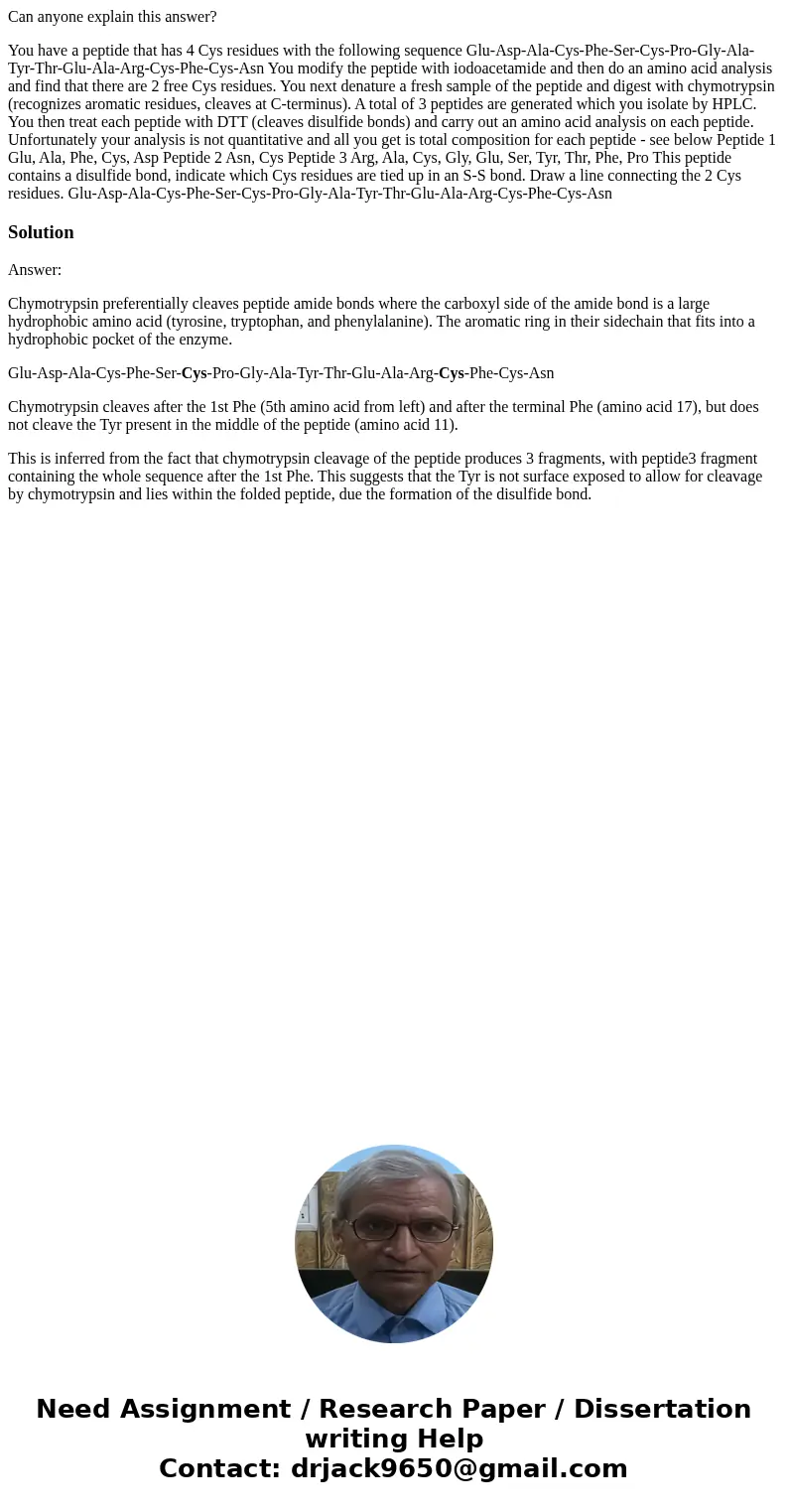Can anyone explain this answer You have a peptide that has 4
Can anyone explain this answer?
You have a peptide that has 4 Cys residues with the following sequence Glu-Asp-Ala-Cys-Phe-Ser-Cys-Pro-Gly-Ala-Tyr-Thr-Glu-Ala-Arg-Cys-Phe-Cys-Asn You modify the peptide with iodoacetamide and then do an amino acid analysis and find that there are 2 free Cys residues. You next denature a fresh sample of the peptide and digest with chymotrypsin (recognizes aromatic residues, cleaves at C-terminus). A total of 3 peptides are generated which you isolate by HPLC. You then treat each peptide with DTT (cleaves disulfide bonds) and carry out an amino acid analysis on each peptide. Unfortunately your analysis is not quantitative and all you get is total composition for each peptide - see below Peptide 1 Glu, Ala, Phe, Cys, Asp Peptide 2 Asn, Cys Peptide 3 Arg, Ala, Cys, Gly, Glu, Ser, Tyr, Thr, Phe, Pro This peptide contains a disulfide bond, indicate which Cys residues are tied up in an S-S bond. Draw a line connecting the 2 Cys residues. Glu-Asp-Ala-Cys-Phe-Ser-Cys-Pro-Gly-Ala-Tyr-Thr-Glu-Ala-Arg-Cys-Phe-Cys-AsnSolution
Answer:
Chymotrypsin preferentially cleaves peptide amide bonds where the carboxyl side of the amide bond is a large hydrophobic amino acid (tyrosine, tryptophan, and phenylalanine). The aromatic ring in their sidechain that fits into a hydrophobic pocket of the enzyme.
Glu-Asp-Ala-Cys-Phe-Ser-Cys-Pro-Gly-Ala-Tyr-Thr-Glu-Ala-Arg-Cys-Phe-Cys-Asn
Chymotrypsin cleaves after the 1st Phe (5th amino acid from left) and after the terminal Phe (amino acid 17), but does not cleave the Tyr present in the middle of the peptide (amino acid 11).
This is inferred from the fact that chymotrypsin cleavage of the peptide produces 3 fragments, with peptide3 fragment containing the whole sequence after the 1st Phe. This suggests that the Tyr is not surface exposed to allow for cleavage by chymotrypsin and lies within the folded peptide, due the formation of the disulfide bond.

 Homework Sourse
Homework Sourse